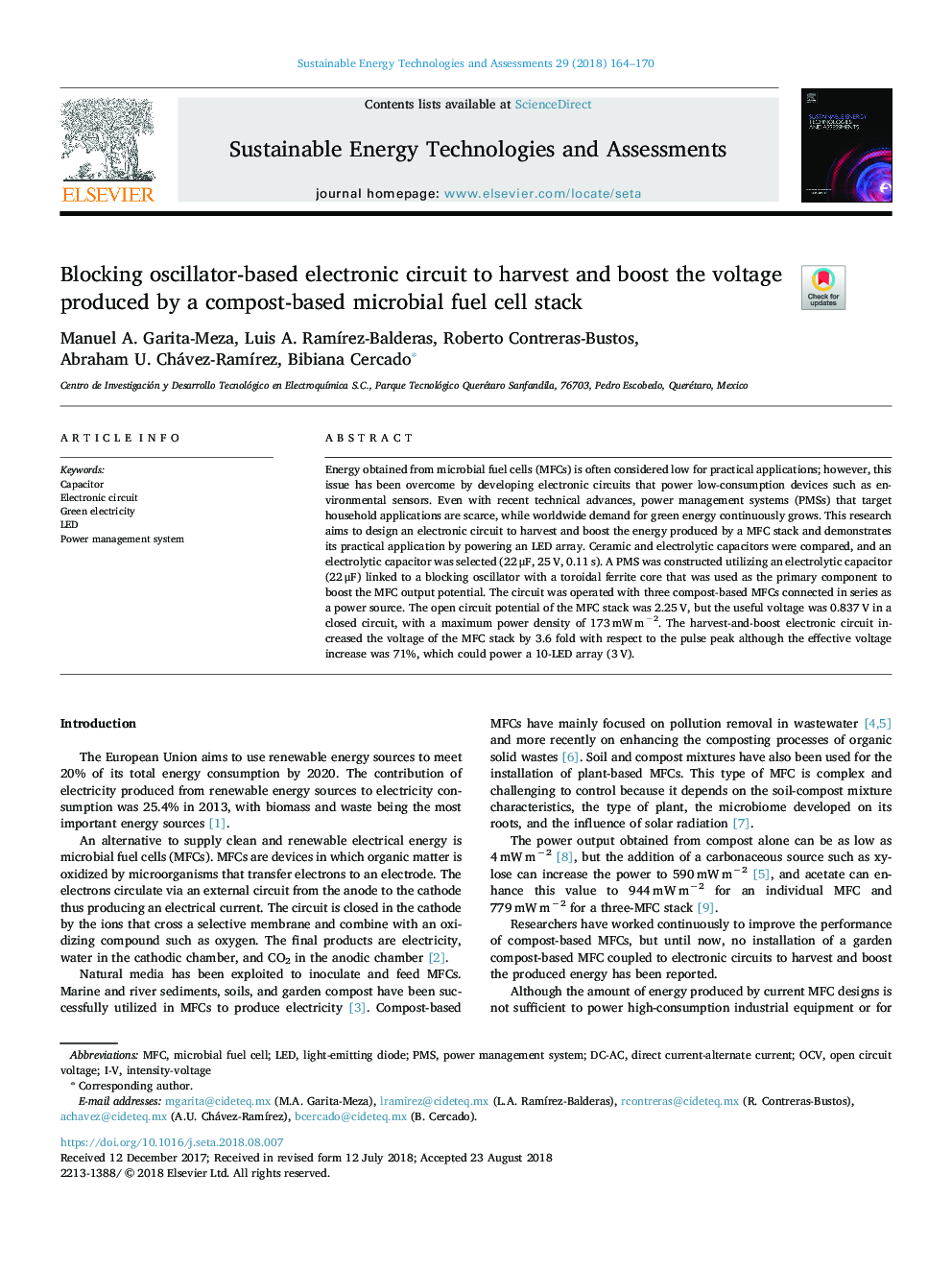| Article ID | Journal | Published Year | Pages | File Type |
|---|---|---|---|---|
| 11007481 | Sustainable Energy Technologies and Assessments | 2018 | 7 Pages |
Abstract
Energy obtained from microbial fuel cells (MFCs) is often considered low for practical applications; however, this issue has been overcome by developing electronic circuits that power low-consumption devices such as environmental sensors. Even with recent technical advances, power management systems (PMSs) that target household applications are scarce, while worldwide demand for green energy continuously grows. This research aims to design an electronic circuit to harvest and boost the energy produced by a MFC stack and demonstrates its practical application by powering an LED array. Ceramic and electrolytic capacitors were compared, and an electrolytic capacitor was selected (22â¯Î¼F, 25â¯V, 0.11â¯s). A PMS was constructed utilizing an electrolytic capacitor (22â¯Î¼F) linked to a blocking oscillator with a toroidal ferrite core that was used as the primary component to boost the MFC output potential. The circuit was operated with three compost-based MFCs connected in series as a power source. The open circuit potential of the MFC stack was 2.25â¯V, but the useful voltage was 0.837â¯V in a closed circuit, with a maximum power density of 173â¯mWâ¯mâ2. The harvest-and-boost electronic circuit increased the voltage of the MFC stack by 3.6 fold with respect to the pulse peak although the effective voltage increase was 71%, which could power a 10-LED array (3â¯V).
Keywords
Related Topics
Physical Sciences and Engineering
Energy
Energy Engineering and Power Technology
Authors
Manuel A. Garita-Meza, Luis A. RamÃrez-Balderas, Roberto Contreras-Bustos, Abraham U. Chávez-RamÃrez, Bibiana Cercado,
